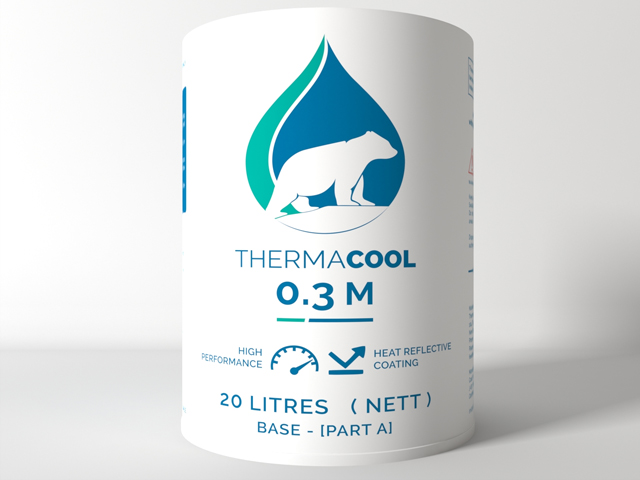Cool Roof Coating
Increased indoor cooling demands have strained power production and contributed to global warming. Cool roof coatings offer an effective solution by using special pigments to reflect infrared radiation from the sun, keeping roofs cooler and reducing the need for air conditioning. This dark-colored cool roof coating provides both insulation and high solar reflectance. It can be applied to houses, industrial sheds, rail compartments, buses, and other structures, reducing roof temperatures by 10 to 20 degrees Celsius, depending on the ambient temperature. This technology saves electricity for air conditioning, leading to a significant 25-30% reduction in monthly electricity bills. The technology includes both the coating and the manufacturing process and is approved by CPWD, Defense, HPCL, and the Dairy Development Board. Its most prestigious application is the coating of the roof of the New Indian Parliament.
In hot regions, houses and buildings absorb solar radiation, making indoor spaces uncomfortably hot. This problem is particularly acute in urban areas, where the heat island effect further intensifies the heat, resulting in even higher temperatures. As a result, air conditioning has become widespread to maintain comfortable indoor environments. However, this increased use of air conditioning consumes significant energy, leading to higher electricity bills and placing a substantial strain on power production systems. This, in turn, contributes to global warming and increases the overall carbon footprint.
- An eco-friendly acrylic base coating modified with reflective and insulating pigments, achieving a minimum of 65% reflectance.
- Applicable to various roofing substrates, including concrete, tiles, shingles, marble, fibrous materials, and bituminous coatings.
- Reduces the need for air conditioning, resulting in a 25-30% reduction in monthly electricity bills.
- Enhances the lifespan of air conditioners in buses for long-distance travel.
- Suitable for use on houses, industrial sheds, rail compartments, buses, and other structures
- Reduces rooftop temperatures by 10-20 degrees Celsius.
- Single layer provides both insulation and solar reflectance.
- Uses fine calcium metasilicate particles as filler materials to enhance insulation properties.
- Contains near-infrared (NIR) reflecting pigments with a spinel-type crystal structure.
- Achieves a minimum solar reflectance of at least 65%, reducing heat transfer to the building.
- Pigment layer thickness ranges from 80-120 microns
The cool roof system comprises a roofing substrate coated with a heat-reflective layer containing Near Infrared (NIR) reflecting pigments and filler materials. The NIR reflecting pigments, such as Ti-Cr-Sb mixed metal oxides, come in dark colors like black, brown, green, blue, and yellow and reflect at least 65% of solar radiation, constituting at least 20% of the coating's weight. This pigment layer typically ranges from 80 to 120 microns in thickness. Fine-sized calcium metasilicate particles are used as filler material to enhance insulation and improve performance characteristics such as abrasion resistance and hardness. The overall coating layer is approximately 200 microns thick. The system also includes a complete preparation and application process.
Cool roof coating reduces carbon footprint, lower cooling costs, significant power savings and reduced electricity bills. It provides increased comfort in government schools, hospitals, and dispensaries while extending the lifespan of air conditioning systems by reducing their load. Additionally, its ease of application makes it accessible for widespread public adoption.
Roofs of the houses, schools, buildings, hospitals, warehouses, containers, overhead water tanks.


